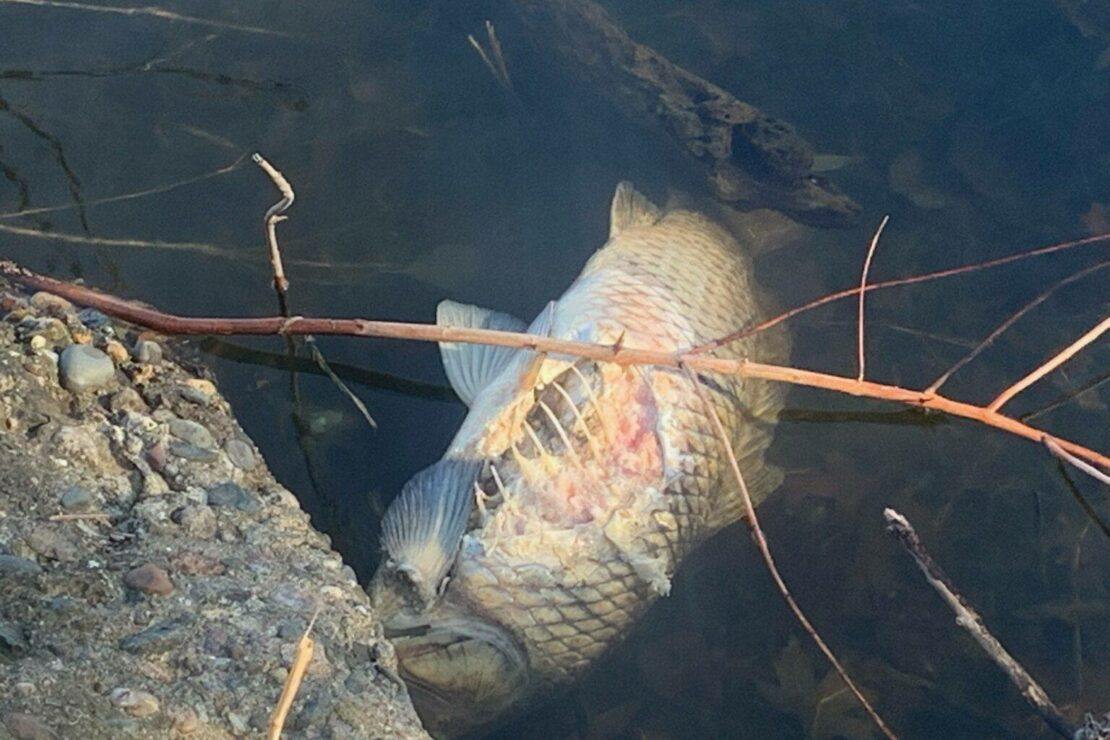

Winter Fish Kills: What Are They?
Winter fish kills, sometimes termed Winterkills, are a common, if visually unsettling, occurrence in areas where winters are long. They are typically caused by very low oxygen levels in shallow lakes and ponds.
So what causes this?
A buildup of snow over the ice limits the ability of aquatic plants to produce oxygen via photosynthesis. The available oxygen in the water is slowly depleted over the winter, reaching levels where fish can’t survive. Species like bluegill and largemouth bass are more sensitive to low oxygen levels than rough fish like carp or bullhead. The fish that did not make it through winter float to the surface and typically wash up on shore as the ice melts in the spring.
Winter fish kills are a natural phenomenon and do not typically pose a threat to the fish population. There are often enough fish in a lake system to repopulate over time and recover. RWMWD monitors the dissolved oxygen of lakes over the winter to anticipate fish kills, but the most surefire way to determine a fish kill has occurred over the winter is by conducting a visual survey of the shore after ice-out.
Although winter fish kills are natural incidents, fish kills can be caused by other factors like chemical runoff. If you observe signs of a fish kill in your local lake or pond, please contact the DNR at 651‐649‐5451 with as many details as possible regarding location, time and date, and types and sizes of fish affected.
More information on fish kills is available on the DNR website.